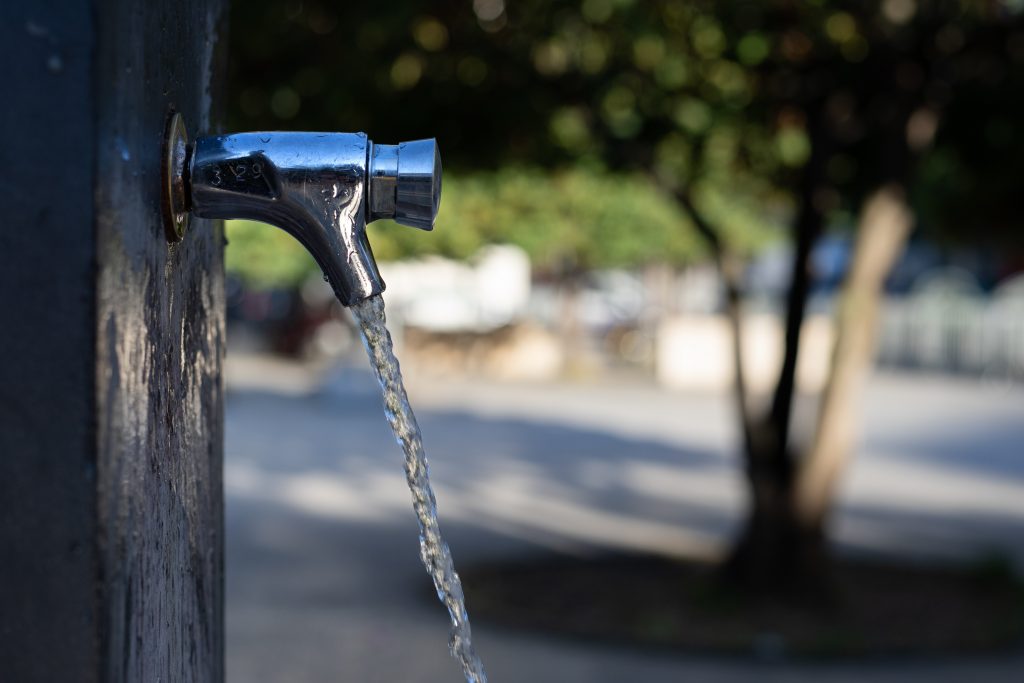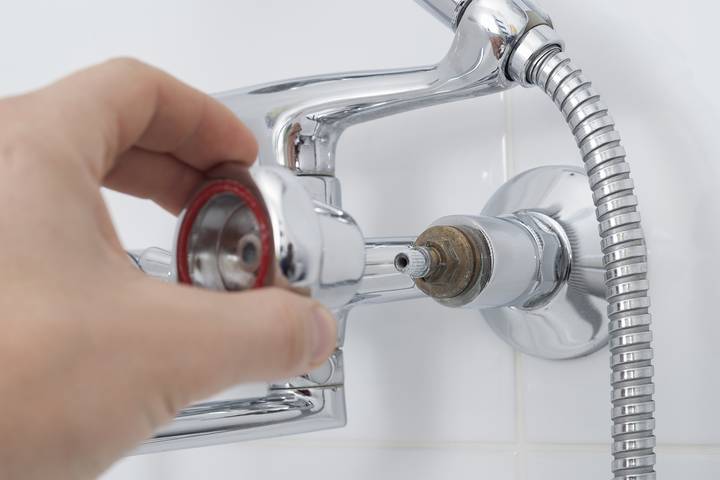What're your thoughts about The Environmental Impact of Leaky Faucets?

Intro
A leaking tap could seem like a minor nuisance, however its repercussions prolong far beyond the occasional drip. Comprehending the impacts of a leaky faucet is essential for both property owners and the environment. In this short article, we'll explore the various impacts of this usual house concern and why resolving it immediately is necessary.
Sources Of Leaky Faucets
Leaking faucets can result from a variety of variables, including deterioration, high water pressure, and deterioration. With time, the consistent use of faucets can lead to damaged seals and gaskets, triggering leaks to develop. In addition, extreme water pressure can put pressure on plumbing fixtures, resulting in leaks. Rust and rust can additionally deteriorate faucet components, making them vulnerable to leakage.
Water Wastage
Among the most significant effects of a leaking faucet is water wastage. Also a little drip can add up to gallons of drainage in time. This not just drives up water costs however also adds to water scarcity and ecological deterioration. Addressing dripping faucets without delay is important for conserving this priceless resource and decreasing its impact on the earth.
Financial Effect
Along with wasting water, leaking faucets can likewise have a significant monetary influence. Boosted water bills are a direct effect of water waste, setting you back property owners thousands of dollars each year. Moreover, the expense of repairing water damage triggered by leakages can be substantial, particularly if left neglected for a prolonged duration.
Ecological Impact
The ecological influence of leaky taps expands beyond water waste. By preserving water, homeowners can contribute to more comprehensive efforts to reduce water scarcity and secure all-natural communities. Lasting choices such as rainwater harvesting and water-efficient fixtures can additionally lower the environmental footprint of home water use.
Technical Solutions
Advancements in technology have caused the growth of smart faucets and water-saving devices that help reduce water waste. Smart taps make use of sensing units to detect motion and change water flow appropriately, minimizing waste without giving up ease. Water-saving tools such as aerators and low-flow showerheads are also effective in conserving water without compromising performance.
Global Perspectives
While leaky faucets may seem like a localized concern, they add to more comprehensive international obstacles such as water deficiency and environment adjustment. In areas currently dealing with water anxiety, every decrease counts, making leak prevention and repair crucial. By taking on water-saving techniques and buying lasting innovations, property owners can play their part in addressing these pressing international problems.
Regulative Procedures
Government policies play an essential role in mitigating the influence of leaking faucets and advertising water preservation. From developing codes that require water-efficient components to water-saving rewards and refunds, policymakers have a range of devices at their disposal. By applying and implementing these policies, governments can make certain that house owners prioritize water preservation in their every day lives.
Community Influence
Attending to leaky taps requires cumulative efforts at the area level. By elevating understanding about the relevance of water conservation and giving resources for leakage detection and repair, regional authorities can empower home owners to take action. Campaigns such as water-saving refund programs and leakage detection projects can incentivize actions change and advertise accountable water use.
Instance Researches
Real-life instances of the effect of dripping faucets emphasize the value of proactive maintenance and prompt repair work. From water damages to skyrocketing water costs, the repercussions of disregarding leakages can be severe. By sharing these case studies, home owners can better comprehend the value of dealing with dripping faucets quickly.
Educational Campaigns
Educational projects play an essential function in elevating awareness regarding the results of dripping faucets and promoting water preservation techniques. Through workshops, seminars, and on the internet sources, homeowners can discover exactly how to identify and repair leaks themselves. By equipping people with expertise and devices, educational campaigns can foster a culture of accountable water use within areas.
Wellness Concerns
Leaky faucets can create favorable atmospheres for mold and mildew and mold development, posturing wellness risks to occupants. The presence of mold can intensify breathing problems and allergies, especially in prone people. Furthermore, water damage resulting from leaks can compromise the structural integrity of structures and lead to pricey fixings.
Do it yourself vs. Specialist Fixing
When confronted with a leaking faucet, property owners typically discuss whether to attempt repairs themselves or hire a professional plumber. While do it yourself repair work can save money, they might not constantly deal with the underlying issue properly. Specialist plumbing professionals have the experience and tools to identify and repair leakages appropriately, making sure long-term solutions and satisfaction for house owners.
Preventive Measures
Preventing leaking faucets calls for routine maintenance and aggressive procedures. Easy jobs such as changing worn-out washing machines and seals can avoid leaks from establishing. Additionally, updating to top notch fixtures and lowering water pressure can aid extend the lifespan of taps and decrease the danger of leakages.
Final thought
In conclusion, the results of a leaky tap extend much beyond the occasional drip. From water wastage and boosted water bills to health and wellness concerns and ecological impact, the repercussions of ignoring leaks can be substantial. By dealing with dripping taps quickly and taking on water-saving practices, house owners can mitigate these impacts and add to a more lasting future.
Why You Shouldn’t Ignore a Leaky Faucet in Your Home
What Causes a Leaky Faucet?
Various factors can cause a leak, from loose and worn-out parts to corrosion. Your faucet has four essential components from which most plumbing issues will stem: the O-ring, the valve seat, the washer and the gasket.
What Is an O-Ring?
The O-ring is a stem screw that fastens parts of the faucet in place, preventing water from leaking out of the spout. Depending on your faucet type, the stem might have multiple O-rings. Water will drip from the faucet’s handles and base if this part breaks or deteriorates.
What Is a Valve Seat?
The valve seat controls the flow and temperature of the water. Found at the base of the handle, it works as a seal for the faucet’s stem. The valve seat ensures the water is allowed to flow or is blocked as the handles dictate. You’ll know it’s malfunctioning when water leaks from your faucet’s sides.
What Is a Gasket?
The gasket is found between the water inlet and the valve stem. It creates a seal between the faucet and the sink, holding its joints by aerators attached to the stem’s head. Water will trickle out from the base if the gasket isn’t working.
What Is a Washer?
The washer secures the handles and prevents leakage, serving a similar purpose to the O-ring. While the O-ring is ordinarily round and made from an elastic material, such as rubber, the washer is square-shaped and composed of brass, copper and other hard metals. If it malfunctions, corrodes or has been improperly installed, water will leak out of the handles, causing that incessant faucet drip.
Why Is a Leaky Faucet Dangerous?
A leaky faucet left alone for too long can have significant consequences.
Pest Infestations
Since bugs and rodents gravitate towards the scent of water, a leaky faucet will draw pests to your sink. Both are looking for leaks accessible through crawl spaces, which a faucet provides. If you leave water dripping for too long, you run the risk of an infestation.
Rust
If one of the faucet parts has started to corrode, the resulting rust can spread to your pipes and valves with startling speed. The rust might even lead to cracks or other impairments, resulting in more severe plumbing issues.
Your sink could also sustain damage from a leaky faucet. The water in your tap possesses sparse elements of calcium and iron that can stain your sink with repeated and prolonged exposure. Once those elements in the water have been open to the air for some time, your sink will start to rust, creating marks that can be difficult to remove.
https://www.tomsmechanical.com/blog/why-you-shouldnt-ignore-a-leaky-faucet-in-your-home

I'm just very curious about The Environmental Impact of Leaky Faucets and I'm hoping you appreciated our post. If you liked our page if you please don't forget to share it. Bless you for being here. Revisit us soon.